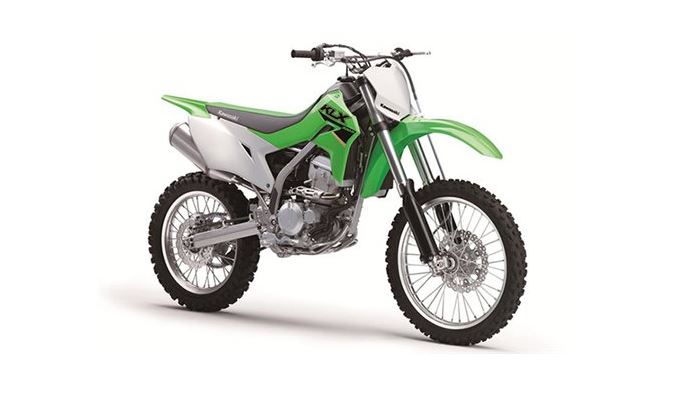2022 Kawasaki KLX300R Brakes
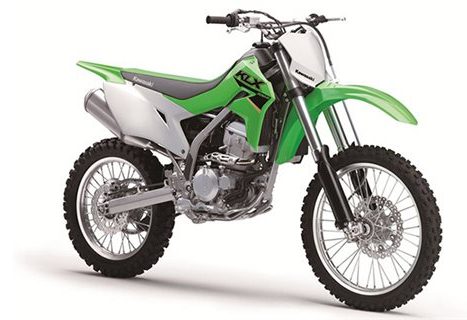
Brakes
Disc and disc pad wear is automatically compensated for and has no effect on the brake lever or pedal action. There are no parts on the brakes that require adjustment except brake lever position.
Brake Lever Position Adjustment
The brake lever position can be adjusted to suit the rider’s preference.
- To adjust the brake lever position and loosen the locknut, then turn the adjuster to either side with a wrench.
- After adjustment, tighten the locknut securely.
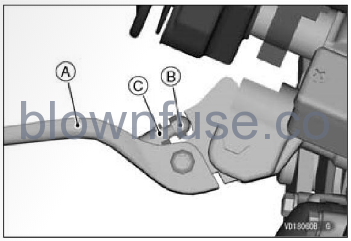
A. Brake Lever
B. Adjuster
C. Locknut
Test the braking power and check that there is no brake drag.
WARNING
Air in the brake lines diminishes braking performance and can cause an accident resulting in injury or death. If the brake lever or pedal feels mushy when it is applied, there might be air in the brake lines or the brake may be defective. Have the brake checked immediately by an authorized Kawasaki dealer.
Disc Brake Fluid
Inspect the brake fluid level in the front and rear brake reservoirs and change the brake fluid in accordance with the Periodic Maintenance Chart. The brake fluid should also be changed when contaminated with dirt or water. Use only heavy-duty brake fluid as follows. Front/Rear Brake Fluid: DOT 3 or DOT 4
NOTE
The motorcycle is shipped with brake fluid DOT4 in the brake system.
NOTICE
Brake fluid quickly damages painted surfaces; any spilled fluid should be completely washed out or wiped up immediately. Do not use fluid from a container that has been left open or that has been unsealed for a long time. Check for fluid leakage around the brake system fittings. Check for brake hose damage.
Brake Fluid Level Inspection (Front and Rear Brake Reservoirs)
With the front or rear brake reservoir positioned horizontally, the brake fluid must always be above the lower level line.
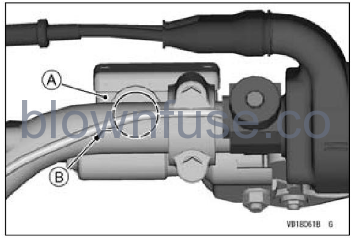
A. Front Brake Reservoir
B. Lower Level Line
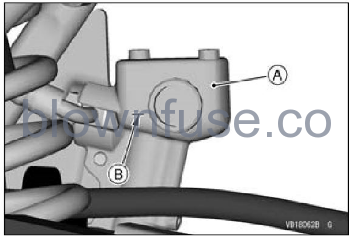
A. Rear Brake Reservoir
B. Lower Level Line
If the brake fluid in the front or rear brake reservoir is below the lower level line, check for fluid leaks in the brake line and fill the reservoir to the upper-level line. (The step inside the front and rear brake reservoirs indicates the upper level.)
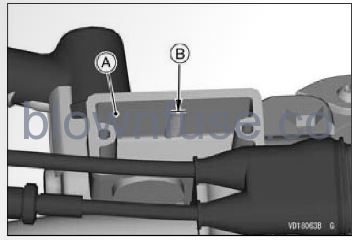
A. Front Brake Reservoir
B. Upper-Level Line
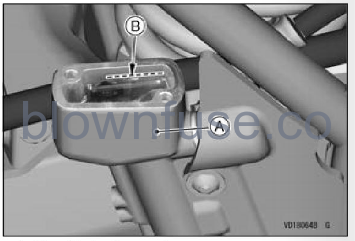
A. Rear Brake Reservoir
B. Upper-Level Line
WARNING
Mixing brands and types of brake fluid can reduce the brake system’s effectiveness and cause an accident resulting in injury or death. Do not mix two brands of brake fluid. Change the brake fluid in the brake line completely if the brake fluid must be refilled but the type and brand of the brake fluid that is already in the reservoir are unidentified.
Brake Pad Wear Inspection
For each front and rear disc brake caliper, inspect the brake pads for wear after cleaning around the brake calipers thoroughly. If either brake pad has been worn until the wear indicator (recess on the
pad end), the remaining brake pad lining thickness is 1 mm (0.04 in.) or less, so both pads in the caliper should be replaced as a set. Pad replacement should be done by an authorized Kawasaki dealer.
Lining Thickness Service Limit
Front/Rear 1.0 mm (0.04 in.)
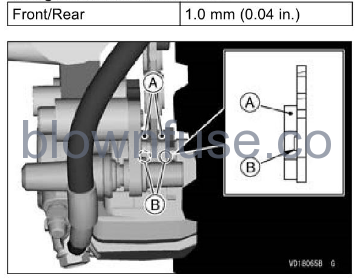
A. Front Brake Pads
B. Wear lIndicator (Recess)
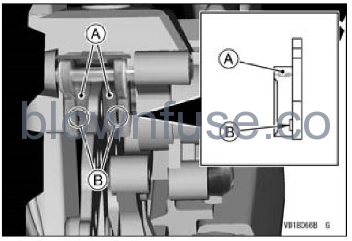
A. Rear Brake Pads
B. Wear Indicator (Recess)
